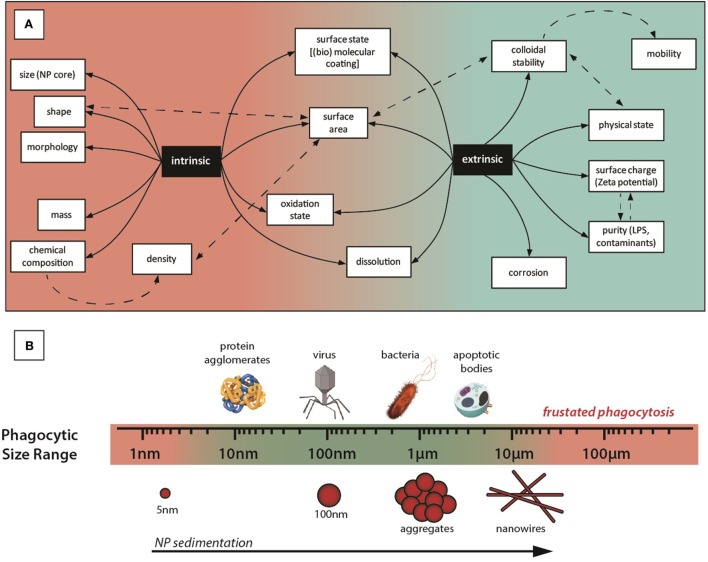Figure 2.
(A) Intrinsic and extrinsic properties of nanoparticles (NPs). Different properties of the NP, related to the NP itself (intrinsic) or to the NP behavior in the exposure media (extrinsic). For instance, we can design CeO2 NPs with specific sizes and shapes, but agglomeration in the exposure media leads to specific surfaces, concentrations, mobilities, etc., very different from the initially prepared NPs. As agglomerated NPs behave as a large particle, this makes the NP more immunogenic and affects the concentration of NPs in different parts of the body, where they are accumulated in organs of the MPS system. Importantly, for the (immuno)toxicity aspects, agglomerates of NPs are no longer on the nanometric regime of sizes and may have similar consequences as the incidental inorganic microparticles, extensively investigated during the last century: burning oil residues, silica from mining or asbestos have been found stacked in affected tissues, causing pathologies such as silicosis, asbestosis, and/or inflammatory reactions. Thus, in this example, even if CeO2 NPs are not toxic (and therapeutically beneficial) by themselves, they may be risky because they could be a source of toxic aggregates. (B) Graphical representative sizes of key entities capable of generating immune response and different NP morphologies and NP aggregates.

